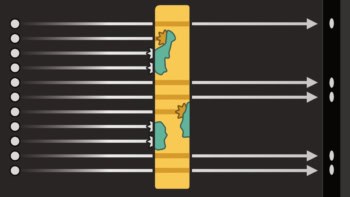
Bono was due to grace the iconic Pyramid Stage. Credit: James Dacey
By James Dacey
The colossal Irish rock group U2 broke thousands of hearts this morning when they announced that they can no longer play their headlining slot at this year’s Glastonbury festival, a result of Bono putting his back out during rehearsals last week. The big question now is – who will replace them?
Well, if festival organizer Michael Eavis is willing to put reputations aside and choose a replacement purely on their musical similarity to U2, he may enlist the help of physicists in Brazil.
Luciano da Costa at the University of Sao Paulo and her colleagues have developed a new way of grouping music based on the subtle differences in rhythm between musical genres.
The researchers studied four musical genres – rock, blues, bossa nova and reggae – looking at 100 songs from each category, analysing the most representative sequences of each rhythm.
They then represent the rhythms as a Markov chain where the nature of each beat depends only on the preceding beat. “Basically, this means that we consider the time duration of each of two subsequent notes in order to obtain the probability transition between each type of notes (duration) in each given composition,” explains Costa.
Costa and her co-author Debora Correa are both classical pianists and they say that this has been an influence on their work. “We wanted to investigate how computing, maths and physics could be used to help us characterize and understand music and music genres,” says Costa.
So okay, I think we can be fairly certain that Michal Eavis will not involve Markov chains in selecting his U2 replacement, but this research could potentially have a far wider impact in the music industry. The researchers believe it could help to improve music platforms, such as Apple’s iTunes, which can group music to make recommendations based on the kind of music you regularly play.
You can read about the method in this open-access paper published recently in New Journal of Physics.



